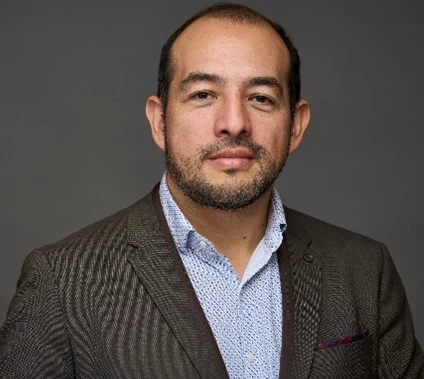Follow the author on Twitter:
@danpulido
 Public-Private Partnership (PPP) projects in infrastructure have traditionally been financed by banks. However, interest in new funding sources is increasing as long-term money from banks has become more difficult and expensive to get, while the assets held by pension funds and other institutional investors have continued to soar. In a context of low bond yields, pension funds are looking for attractive long-term investment opportunities to diversify their holdings and meet their long-term payment obligations. Realizing an opportunity to match supply and demand, governments and investors in the developed and developing world have turned their attention to Project Bonds, debt instruments issued by PPP project companies in the capital markets as a way to fund infrastructure investments.
Public-Private Partnership (PPP) projects in infrastructure have traditionally been financed by banks. However, interest in new funding sources is increasing as long-term money from banks has become more difficult and expensive to get, while the assets held by pension funds and other institutional investors have continued to soar. In a context of low bond yields, pension funds are looking for attractive long-term investment opportunities to diversify their holdings and meet their long-term payment obligations. Realizing an opportunity to match supply and demand, governments and investors in the developed and developing world have turned their attention to Project Bonds, debt instruments issued by PPP project companies in the capital markets as a way to fund infrastructure investments.
These “Project Bonds” mostly target institutional investors - including pension funds, and have generated a great deal of interest among investment bankers, lawyers and investors. All this hype raises a number of questions: Are these “Project Bonds” really living up to expectations? Can governments really rely on Pensioners Paying for Projects (a newfound meaning for PPPs!)? What do we need to do to turn these instruments into a significant source of financing and close the infrastructure investment gap?
Although selling infrastructure project bonds to pensioners is not a new idea, it has not really taken off, except in a few markets such as Canada. There have been multiple transport project bond issuances in Latin America, but most of the bonds issued to date have gone to refinance existing debt and to fund expansions of existing PPP projects that already generate stable cash flows (“brownfield projects”); or have been backed entirely by government payments without any exposure to project risk, representing pricier public bonds in disguise. Examples include:

These “Project Bonds” mostly target institutional investors - including pension funds, and have generated a great deal of interest among investment bankers, lawyers and investors. All this hype raises a number of questions: Are these “Project Bonds” really living up to expectations? Can governments really rely on Pensioners Paying for Projects (a newfound meaning for PPPs!)? What do we need to do to turn these instruments into a significant source of financing and close the infrastructure investment gap?
Although selling infrastructure project bonds to pensioners is not a new idea, it has not really taken off, except in a few markets such as Canada. There have been multiple transport project bond issuances in Latin America, but most of the bonds issued to date have gone to refinance existing debt and to fund expansions of existing PPP projects that already generate stable cash flows (“brownfield projects”); or have been backed entirely by government payments without any exposure to project risk, representing pricier public bonds in disguise. Examples include:
- Rutas de Lima in Peru (2014): US$520 million local currency bonds with maturities exceeding 20 years used to fund the maintenance and operation of existing roads and the construction of 19 additional kms; purchased by local pension funds.
- Road Concession Auto Raposo Tavares in Brazil (2013): US$370 million 12-year bonds in Brazilian Real issued to refinance existing debt and fund some capital expenditures.
- Via Parque Rimac in Peru (2012): US$445 million 25-year bonds in Peruvian Soles used to expand an existing urban toll road.
- IIRSA roads in Peru (2006): backed by irrevocable and unconditional government payments.
- Pension funds seek stable cash flows;
- Most pension fund managers do not have the expertise to assess construction risk;
- It is difficult to organize multiple passive investors with limited sector experience to make key restructuring decisions when projects go wrong;
- Unlike loans that can be disbursed over time to match a project construction schedule, bond proceeds are generally drawn once at closing, generating a financial cost for issuers who do not need all the money at once.
- In March 2014, the A11 Motorway in Belgium, a greenfield PPP project, was able to issue €578 million in bonds with a maturity of 32 years using credit enhancement that the European Investment Bank provided in the form of a contingent loan ( to be used if the project is unable to pay bondholders).
- In Latin America we have also seen some innovative instruments put to use. In Peru, where infrastructure bonds have evolved from government-backed instruments to more sophisticated securities with partial exposure to project risks, the latest development is the issuance of a 30-year U.S. Dollar bond that is being touted as the “first international greenfield project bond in Latin America”. The bond, issued in late 2013 to finance the construction of the Eten power plant, carries full construction and operational risk, but benefits from a partial credit guarantee (20% of the debt) from the Andean Development Bank that makes it palatable to institutional investors. The bond also incorporates multiple drawdowns to match disbursements with the construction schedule and a governance structure that facilitates decision-making if a restructuring is needed.
- Uruguay is working on the development an infrastructure bond transaction template and is evaluating risk mitigation mechanisms;
- Brazil has exempted international investors in priority projects from taxes on their bond interest income. Also, the Brazilian Development Bank (BNDES) has accepted to share its collateral under project loans with bondholders and, to further stimulate the bond market, it is considering the creation of a fund to invest in project bonds.
- In Colombia, unlocking pension fund investment is an integral part of the massive road PPP program. Specifically, the government has designed a bond for projects in operation that has been deemed of “pension fund quality” by a recognized rating agency, and is also developing a greenfield bond solution incorporating credit enhancement from the National Development Bank (FDN) and multilateral development banks;


Join the Conversation